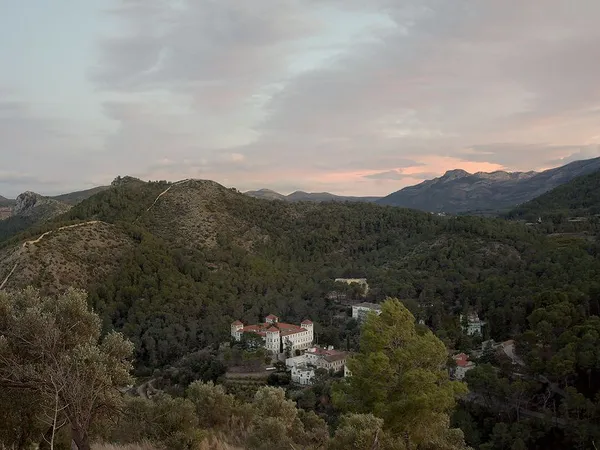Eye For Film >> Movies >> The Other World (2025) Film Review
The Other World
Reviewed by: Amber Wilkinson

A Jesuit monk’s book of letters, entitled From The Other World, were the inspiration for Callisto McNulty’s engaging documentary, which comes as a reminder of how lasting the stigma associated with certain diseases can be. In the letters, which span just over a decade from 1913 to 24, he charts life at the Les Fontilles sanatorium in southeastern Spain, where those with leprosy were sent through fear of contagion.
Rather than his letters being filled with doom and gloom, however, the monk views Les Fontilles as a haven – “One cannot arrive here without their heart leaping,” he writes. That’s something Frederic Lobo’s careful and calm camerawork brings home even today. Heading to the lush rural spot where the impressive Les Fontilles lies, Swiss-French director McNulty mimics the tranquility with her framing that takes its time to give a sense of place, while letting birdsong and other sounds of the natural world predominate.

Given that those with leprosy have faced ostracisation globally down the centuries, it may come as a surprise that it is not a particularly communicable disease, unless you are genetically predisposed, although poverty and several other factors also play their part. McNulty lets a doctor explain the ins and outs of this, giving good grounding, although the chief contributors are residents and care workers, many bringing first-hand testimony of Les Fontilles history.
History comes alive in the voices of those who remember it as ruminations on the disease mix with recollections of how Les Fontilles used to be before, it seems, it transformed into a more general care home.
“I’ll be considered a leper until I die,” says Maria, despite being cured for years. Elsewhere livewire 76-year-old Mariano flirts with the care workers and pumps high energy flamenco music out of his mobility scooter as he zips about the place a flag streaming behind him.
McNulty strikes an impressive balance. Contemplative elements ground the movie, including the revelation of one sick person living in what amounted to a cave, but this is largely a celebration of life in the face of the adversity of the disease. Although men and women were strictly segregated, someone recalls how their grandad, who was a security guard, pretended to sleep so that hook ups could be had.
While not romanticising the lives of those who had leprosy, McNulty captures the positivity that has predominated in Les Fontilles. The testimony suggests the level of kinship the sanatorium provided, although nobody says this directly, there’s a sense of them all being in it together in the face of prejudice from the wider community. Social history is a precious thing that is told best by those who lived it, its fragility brought home by in memoria notes in the credits which mourn the passing of some contributors – McNulty handles it with care.
Reviewed on: 06 Apr 2025















